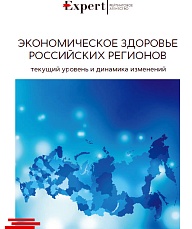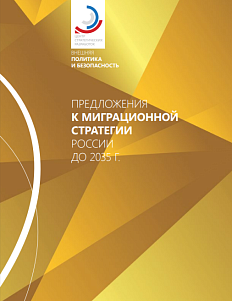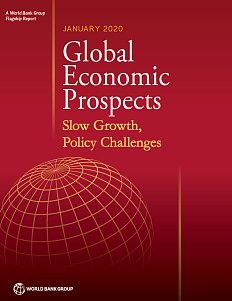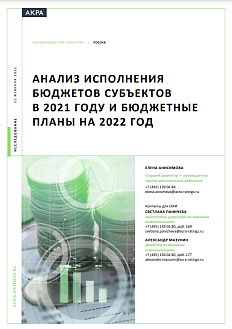Economic Health of the Russian Regions: Current Level and Changing Dynamics

The study makes it possible to differentiate Russia’s regions based on their current level of economic development (status map) and changes in the regional economy (dynamic map), i.e. it helps to visually see which regions are experiencing positive dynamics and which ones are deteriorating.
The study is based on the regional economic health index. The index is used due to a significant lag (more than a year and a half) in the time it takes to publish data on GRP (gross regional product) as well as the existence of a large array of regional data: the index uses operational (monthly) data on the situation in regions published by the Russian Federal State Statistics Service (Rosstat), the Ministry of Finance of the Russian Federation, the Russian Central Bank, and the Federal Tax Service of Russia. The index consists of three main groups of indicators that are used to assess the economic health of the population of the regions, regional business, and the consolidated budget of a region. Each group contains 3-4 key indicators.
There is currently a high degree of differentiation in the development of Russia’s regions. There continues to be a gap between the values of key metrics (the wellbeing of the population, the state of business, and a region’s consolidated budget) in regions with high and low levels of development. The current level of development is rated as high in 12 regions, above average in 20 regions, and average in 19 regions. The current level of development in 20 and 14 regions is rated as below average and low, respectively.
This year, the index values improved in the overwhelming majority of Russian regions. In particular, positive trends (i.e. a significant improvement in indicators) were seen in 29 regions, while 36 regions showed moderately positive trends. Neutral indicators were recorded in 14 regions. Moderately negative dynamics were seen in 6 regions. On results of the current year, there were no regions in which the key indicators integrally demonstrated significant negative dynamics.
Anlytics on the topic

The report titled Proposals for Russia’s Migration Strategy through 2035 has been prepared by the order from the Centre for Strategic Research. The period that followed the disintegration of the Soviet Union proved to be challenging
for Russia from the perspective of politics, socioeconomics, demographics and migration. The unfavourable demographic trends and the declining and ageing of the population
were partially offset by an influx of temporary and permanent migrants from
other post-Soviet states. But numerous errors in the migration policy led to a decrease in Russia’s migration attractiveness, turning migration into a source of social tension and an instrument of political infighting.

The flagship report published by the World Bank examines macroeconomic indicators and global trends in trade and finance, both at global and regional level. The authors assess the current economic situation and give a forecast for the prospects of global and regional economies.

In this report, ACRA analyses budget execution in Russia’s federal subjects in 2021 and their budget plans for 2022.

Afreximbank President and Chairman of the Board Prof. Benedict Oramah shared his views about the future of the African economy and what role Russian companies will play in it.

